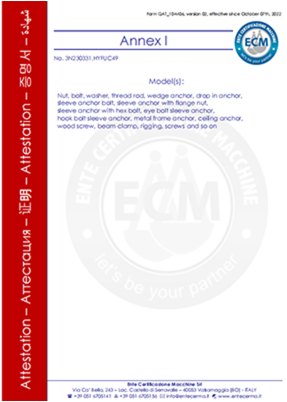Eki . 12, 2024 11:52 Back to list
threaded rod fixing
Understanding Threaded Rod Fixing An Essential Guide for DIY Enthusiasts and Professionals
Threaded rod fixing is a crucial aspect of construction and mechanical assembly that ensures stability and durability in various applications. Whether you're a DIY enthusiast or a seasoned professional, understanding the nuances of threaded rod fixing can help you tackle projects more effectively.
What is a Threaded Rod?
A threaded rod is a long, cylindrical metal rod that is threaded on both ends or along its entire length. Typically made from materials like steel, stainless steel, or brass, these rods come in various diameters and lengths, providing versatility for different applications. Their primary function is to connect multiple components securely, often serving as a tensioning device in structures.
Common Applications
Threaded rods are used in a wide range of applications. In construction, they are often employed to anchor structural elements, such as beams and columns. In mechanical assemblies, they provide tension between components, ensuring that parts remain securely fastened, even under dynamic loads. Additionally, threaded rods are prevalent in furniture assembly, automotive components, and even in the creation of custom fixtures.
Types of Threaded Rods
Threaded rods can be classified into several types based on their thread standards and materials
. Common types include1. Full Threaded Rods These rods have threads running the entire length, allowing for maximum engagement with nuts and other fixtures. 2. Partially Threaded Rods These rods feature threaded sections only on part of their length, providing a smooth shank for certain applications.
3. Materials Depending on the environment they will be used in, threaded rods can be made from different materials. For instance, stainless steel rods are ideal for applications exposed to moisture, while carbon steel rods are commonly used in dry environments.
threaded rod fixing

Installation Techniques
Proper installation is vital for ensuring the effectiveness of threaded rods. Here are some essential steps to consider during installation
1. Preparation Ensure that all surfaces are clean and free of debris. Any dirt or contaminants can affect the integrity of the fix.
2. Measurement Measure the distance between the components that need to be connected to ensure the correct length of the threaded rod.
3. Alignment Align the holes in the components accurately before inserting the threaded rod. Proper alignment is crucial for stress distribution.
4. Securing Use appropriate nuts and washers to secure the connection. It's recommended to use locking nuts to prevent loosening over time due to vibration.
5. Torque Apply the appropriate torque with a wrench to ensure a snug fit but avoid over-tightening, which can lead to rod deformation or thread stripping.
Conclusion
Threaded rod fixing is more than just a mechanical connection; it represents integrity and stability in various structures and assemblies. Understanding the types, applications, and installation techniques of threaded rods can enhance your project outcomes significantly. Whether building a home, constructing a framework, or assembling furniture, mastering threaded rod fixing is an invaluable skill that ensures safety and durability. With the right knowledge and tools, anyone can confidently use threaded rods to achieve reliable and lasting connections.
-
The Ubiquitous Reach of DIN934 in Application Realms
NewsMay.16,2025
-
Exploring Different Bolt Types
NewsMay.16,2025
-
Cracking the Code of Sleeve Anchor Mastery
NewsMay.16,2025
-
Clamp Design Principles,Types and Innovations
NewsMay.16,2025
-
Artistry Inspired by the Humble Anchor Bolt
NewsMay.16,2025
-
A Deep Dive into Screw Types
NewsMay.16,2025


